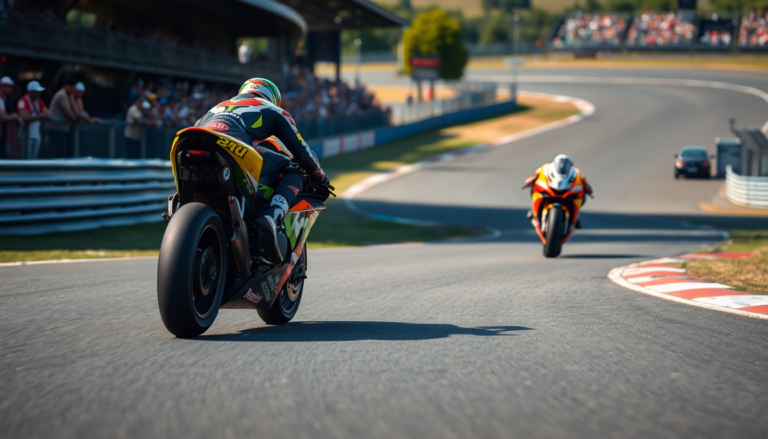Argomenti trattati
As the MotoGP season heats up, the spotlight is firmly on the performances of teams and riders. This is more than just a race; it’s an opportunity to delve into their strengths and weaknesses, which not only enriches our grasp of the championship but also sets the stage for what’s to come. So, what have we learned from the first part of the season? In this comprehensive look, we’ll dissect the performances so far, focusing on key elements like rider skill, team strategy, and their ability to adapt to ever-changing race conditions.
Market Overview of MotoGP Performances
In the exhilarating world of MotoGP, performance metrics hold as much weight as they do in real estate. Every race serves up a treasure trove of data, allowing us to assess the standing of teams and riders with precision. This season’s first half has unveiled significant trends that paint a vivid picture of the competitive landscape. Teams that have made smart investments in technology and rider development are reaping the rewards, showing marked improvements in performance. Key indicators—like lap times, finishing positions, and consistency—tell a compelling story about how well teams are positioning themselves for success.
Recent data paints a promising picture for the top-performing teams, which are consistently achieving high returns on investment (ROI) when it comes to points earned versus their spending on rider contracts and bike upgrades. Just as in real estate, where location and market conditions drive value, in MotoGP, it’s the synergy between rider talent and team strategy that truly determines outcomes. The statistics demonstrate that adaptability to race conditions has emerged as a critical differentiator among the leading contenders. So, how well are your favorite teams adapting?
Analysis of Key Teams and Riders
Diving into the performances of leading teams and riders offers deeper insights into who might take the crown as the season progresses. The data reveals that certain teams are thriving thanks to their strategic investments in technology and rigorous rider training. For example, teams that have prioritized optimizing their bikes for varying weather conditions have clearly outperformed those that haven’t adapted.
It’s essential to remember that riders are just as pivotal to their teams’ success. Analyzing individual performances shows that those who can quickly adjust to the dynamics of race day—like tire choices and track conditions—often secure better results. The ability to keep a cool head under pressure is invaluable; the statistics clearly support the connection between mental resilience and on-track performance. Who do you think has shown the most resilience this season?
Price Trends and Investment Opportunities
Much like the real estate market, where trends can highlight investment opportunities, MotoGP performances can signal prospects for success. For both investors and fans, understanding the fluctuations in team performances is key. The first half of the season has seen some teams surge dramatically while others have struggled to keep up. This volatility opens doors for those looking to back or invest in teams poised for growth.
Evaluating a team’s potential is akin to assessing a property; it requires looking beyond mere surface-level metrics. It’s crucial to consider the long-term trajectory, including rider contracts, team dynamics, and technological advancements. The performances we’ve witnessed so far suggest that some teams might be undervalued in light of their potential to improve as the season unfolds. Which teams do you believe are flying under the radar?
Practical Insights for Fans and Investors
For fans and aspiring investors, there are valuable insights to draw from the current state of the MotoGP season. By paying close attention to the underlying factors that contribute to team and rider success, you can deepen your appreciation for the sport. Additionally, for those eyeing investments within the MotoGP ecosystem, understanding which teams are likely to improve based on current performance metrics can lead to savvy investment decisions.
In conclusion, as the MotoGP season progresses, the importance of data analysis and performance evaluation cannot be overstated. Just like in real estate, where grasping location and market dynamics is essential, the MotoGP landscape demands our scrutiny. By focusing on performance metrics and trends, both fans and investors can navigate the thrilling world of motorcycle racing more effectively. What insights will you take away for the rest of the season?

